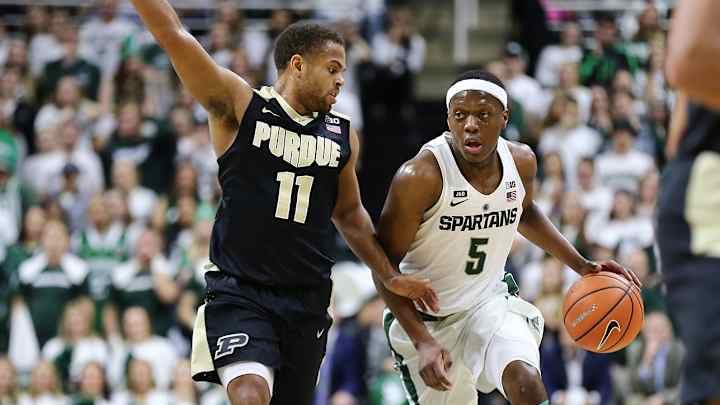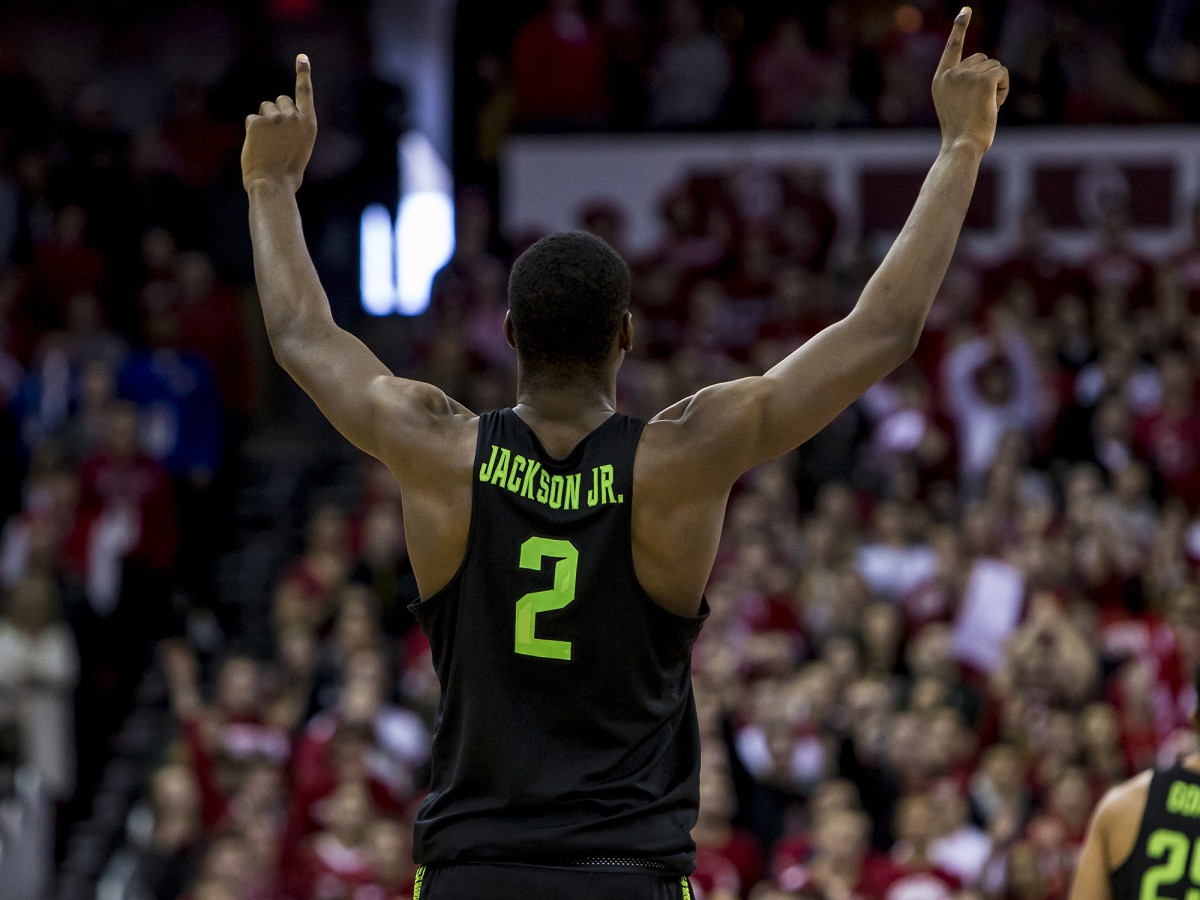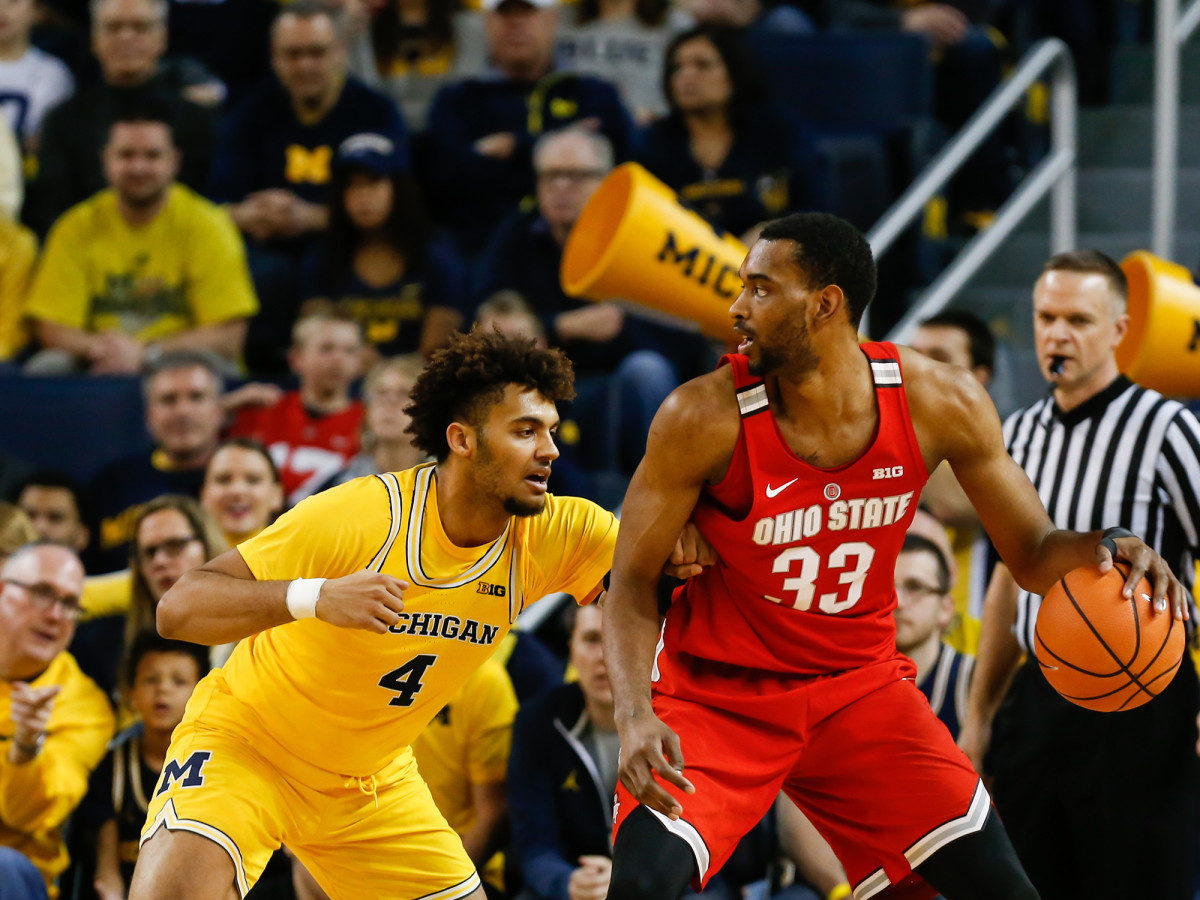Four Big Ten Teams Poised to Make Noise in March

The Big Ten’s regular season drew to a close on Sunday, earlier than any other high-major conference, and its tournament tips off on Wednesday in a city well outside of its traditional Midwest footprint: New York. The weirdness of watching Big Ten teams square off over five days at Madison Square Garden is compounded by the timing of the event. While other brand-name conferences will compete for eyeballs in the run up to Selection Sunday next week, the Big Ten will have wrapped up intra-league play with seven days to spare before the field of 68 is revealed. If you’ve been following the Big Ten since the conference season began in December, you know what to expect this week. Others preoccupied with different leagues over the past couple of months may be surprised to learn that only four of the Big Ten’s 14 squads look like good bets for at-large bids at this point. To preview what’ll unfold at MSG over the next five days, SI.com is ranking the conference’s four best teams.
This is the 14th version of a weekly column analyzing four college hoops topics bound by some underlying narrative thread. If there’s something you’d like to see in this space, don’t hesitate to reach out to me.
1. Michigan State
A Yahoo! Sports report tying Miles Bridges and his mother to a runner facing federal charges as part of the ongoing investigation into corruption across college basketball threatened to disrupt the Spartans’ run through the Big Ten. Alas, a day after the report was released, Michigan State’s interim athletic director Bill Beekman announced Bridges had been cleared to compete on Sunday against Wisconsin. Bridges wasn’t great overall against the Badgers, hitting only three of his 15 shot attempts for 10 points, but Michigan State won anyway to clinch the conference regular-season title outright for the first time in nine years. Since losing at home to Michigan on Jan. 13, the Spartans have won 12 straight and, among Big Ten teams, they ranked second offensively and third defensively on a per-possession basis during conference play. In Bridges and freshman Jaren Jackson Jr., Michigan State rolls out a pair of projected NBA draft lottery picks who score effectively from both sides of the arc. Sophomore point guard Cassius Winston has connected on a higher percentage of his long-range shots (56.5 on 124 attempts) than any other Division I player, fellow sophomore Joshua Langford has hit 44.2% of his 95 tries from deep, and junior Matt McQuaid gives the Spartans another potent threat from distance off the bench (40.2% on 117 attempts).
As a whole, Michigan State checks in at fourth in the country in effective field goal percentage, which takes into account the added value of threes. The Spartans’ No. 7 defense, according to Ken Pomeroy’s adjusted efficiency, is fueled by their limiting opponents to only 37.8% shooting on twos, the lowest mark in the nation by nearly three percentage points. But Michigan State would benefit if it could generate a few more turnovers to offset its own turnover issues. Opponents are turning the ball over against the Spartans on only 14.7% of their possessions, which ranks 343rd in the country, whereas Michigan State is coughing it up 19.4% of the time (249th). The off-court turmoil in East Lansing doesn’t seem likely to fade any time soon, but on the court the Spartans are rounding into the national championship challenger they looked like in the fall.

2. Purdue
The Boilermakers were perfect during conference play outside of one lousy, nine-day stretch earlier this month. Three days after falling to Ohio State by one point on Feb. 7, Purdue pushed Michigan State in East Lansing before succumbing, 68-65. Five days after that, the Boilermakers suffered a four-point loss at Wisconsin. Those three Ls—which had a combined margin of defeat of only eight points—cost Purdue the Big Ten crown, its No. 3 ranking in the AP Top 25 Poll and possibly a No. 1 seed in the NCAA tournament, but they shouldn’t obscure how good the Boilermakers have been for most of this season. After a two-game skid against potential top-three tourney seed Tennessee and Conference USA contender Western Kentucky at the Battle 4 Atlantis tournament in the Bahamas during Feast Week, Purdue ripped off 19 consecutive wins, and it is one of only four teams in DI—along with Michigan State, Duke and Gonzaga—that rank in the top 25 of Ken Pomeroy’s adjusted offensive and defensive efficiency.
The Boilermakers are one of the best shooting teams in the country. They have five players with at least a 38% hit rate from behind the arc on at least 90 attempts, and they topped the Big Ten in effective field goal percentage during conference play. Sophomore Carsen Edwards isn’t just a breakout sophomore with a bright future. He’s one of the Big Ten’s best players right now, and Purdue has enough alternative scoring options—including seniors Isaac Haas, Vince Edwards (no relation) and Dakota Mathias, all of whom are averaging at least 12 points per game—to temper Edwards’s workload. Yet anyone questioning whether he’s suited to be an offense’s go-to guy need look no further than last week’s win at Illinois, when Edwards hit 11 of his 19 field goal attempts and 14 of his 16 free throw attempts to become the first Boilermakers player to drop 40 in a game since Glenn Robinson in 1994. Purdue closed out its Big Ten slate three days later by smashing Minnesota, 84-60, in West Lafayette.
3. Michigan
The Wolverines have veered from their standard performance pattern under head coach John Beilein. Since the 2010-11 season—in which Michigan ranked 37th on defense and 39th on offense, according to Ken Pomeroy’s adjusted efficiency—Michigan has been unfailingly better on offense than defense, including three seasons in which the difference was larger than 60, per the same metric. But that’s not the case in 2017-18.
Beilein’s guys closed out Big Ten play ranked No. 35 on offense and No. 12 on defense. The Wolverines have held up well on that end of the court by running teams off the three-point line and ending possessions with defensive glass-crashing. Opponents have launched only 29.6% of their shot attempts from deep against Michigan, the ninth-lowest percentage in the country, and rebounded only 23.9% of their missed shots, which ranks 23rd in the country. The Wolverines slow the pace of games to a crawl (336th in the nation in adjusted tempo), but they don’t fritter away their limited number of possessions, turning the ball over only 14.1% of the time, better than all but one other DI team (Saint Joseph’s). Junior big man Moritz Wagner was one of the Big Ten's most accurate three-point shooters during conference play, canning 41.7% of his 72 attempts, and Michigan has three other players who drained at least 36% of their tries from distance against league competition on at least three attempts per game (freshman guard Jordan Poole, senior guard Muhammad-Ali Abdur Rahkman and senior forward Duncan Robinson).
The Wolverines dropped too many games during the middle portion of their conference schedule to make a run at Michigan State, Ohio State and Purdue at the top of the Big Ten standings, but they appear to be hitting their stride at just the right time. Michigan has fallen to only one team outside of the top five of ESPN’s Basketball Power Index since mid-January, and its 85-61 whipping of Maryland in College Park on Saturday was its fifth win in a row.

4. Ohio State
A few months ago, it didn’t look like the Buckeyes had any shot at finishing among the Big Ten’s top four teams. Chris Holtmann was viewed as a promising hire for Ohio State after it decided to part ways with longtime head coach Thad Matta last June, but the Buckeyes’ short-term upside seemed limited. After leaving Butler, Holtmann inherited a roster that in 2016-17 won just 17 games, posted a 7-11 record in conference play, failed to qualify for the NCAAs for the second straight season and finished ranked 73rd in Ken Pomeroy’s adjusted efficiency rankings. Plus, the Buckeyes’ incoming recruiting class was composed of three players ranked outside the top 70 of the 247Sports Composite. And although Keita Bates-Diop was set to return after playing in just nine games the previous season because of a stress fracture, their only other roster addition of note— graduate transfer guard Andrew Dakich—was bound for Metro Atlantic Athletic Conference school Quinnipiac before ending up in Columbus.
That group will show up in New York this week in the final stages of an incredible year-to-year turnaround, one that has produced conference player of the year (junior forward Bates-Diop) and coach of the year awards (Holtmann). The Buckeyes edged Indiana in double overtime at Assembly Hall on Friday night thanks to a clutch three from junior guard C.J. Jackson to move to 24-7 overall and 15-3 in conference play, good enough for the No. 2 seed in the league tournament (behind No. 1 Michigan State). Although Ohio State suffered two of its three Big Ten losses over its last four games, it has been able to handle most of its conference opponents by defending well inside the three-point arc, preventing them from generating extra scoring opportunities with offensive rebounds and getting enough buckets from Bates-Diop, who ranks second in the conference with 19.2 points per game. (Penn State’s Tony Carr is first at 19.9). The Buckeyes could lose in the quarterfinals on Friday and this season would still go down as a resounding success, but their defensive solidity could make them a tough out in the tourney.
